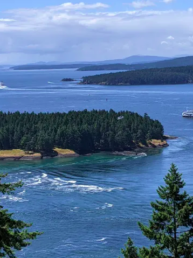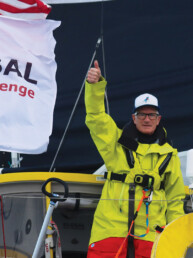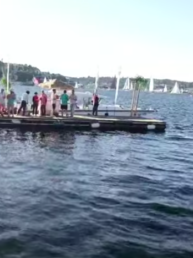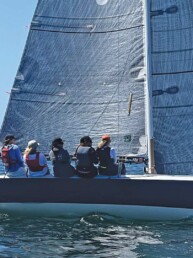Finding Worldwide Voyaging Experiences Aboard Other People’s Boats
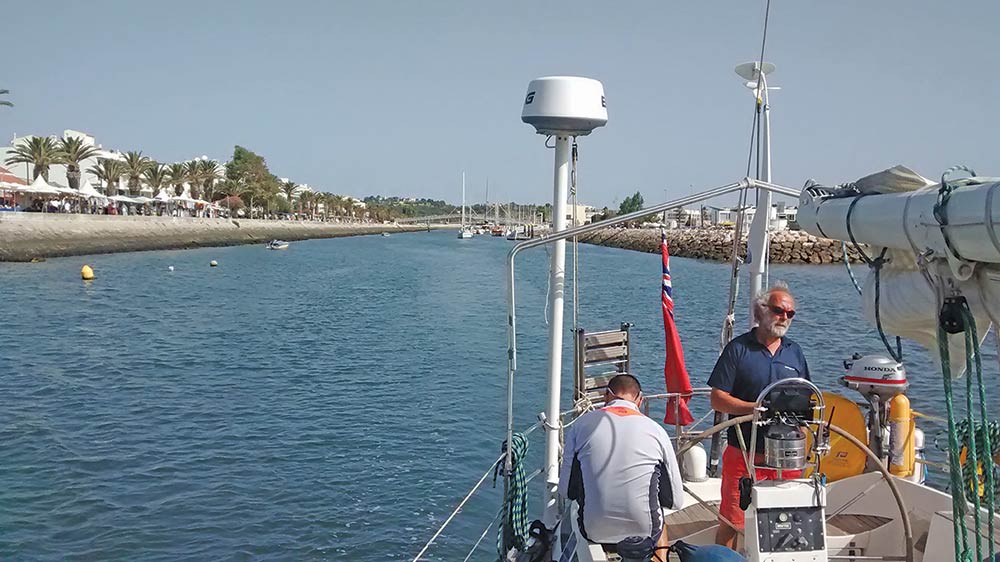
In the Pacific Northwest, we are truly blessed to sail upon the amazing waters of the Salish Sea. Spending my formative years racing and cruising around southern Vancouver Island was a great playground to learn about tides and winds. But, like many others, I wanted to branch out and try my hand in waters farther afield. In order to do so, I searched out opportunities and experiences as an amateur crew in various parts of the world.
Responding to crew advertisements like the likely-mythical one associated with Ernest Shackleton’s expedition is not quite the journey most of us are after: “MEN WANTED for hazardous journey, small wages, bitter cold, long months of complete darkness, constant danger, safe return doubtful, honor and recognition in case of success.” Most of us would probably choose a voyage with fewer hazards and less of that bitter cold. Many cruisers take up this adventure on our own vessels; alternatively, crewing on other people’s boats can be a great option.
In a departure from the familiar waters of the Salish Sea, I have recently taken on the challenge of captaining my own boat, a Beneteau First 405, from South Carolina south through the Caribbean to Grenada. However, prior to this I sought out a number of crewing opportunities to practice sailing in foreign waters and working with different crews and skippers.
These days, coming across crewing opportunities is surprisingly easy. Innumerable websites are dedicated to matching skippers and crew. Professional services such as CrewSeekers, Offshore Passage Opportunities, OceanCrewLink, user-run pages on Facebook, and others provide opportunities to join boats for every type of voyage from day sailing to months-long offshore passages.
I’ve had the pleasure of joining three very different voyages in different parts of the world through online connections — two were through OceanCrewLink and one was from Facebook. I chose OceanCrewLink for its connection to the Atlantic Rally for Cruisers (better known as the “ARC”) series, and its reasonable cost structure. The model for most of these sites is very similar; potential crew and skippers can browse advertisements, but must pay to access contact information. You will be asked to create a profile with photos, your experience, and other information. And yes, insert your internet dating jokes here.
My first journey with OceanCrewLink was a delivery from just south of Barcelona, Spain, to Ipswitch, on the east coast of the UK. The route sounded like a great mix of coastal hops and longer multi-day passages; the fact that the owner was delivering a beautiful new-to-him navy blue Swan 46 helped sell the deal a little too! After flying halfway around the world, taking a three hour train, a short cab ride, and trying to pronounce “yacht club” in broken Spanish, I found the correct marina and the boat at about 11 p.m. Trying to communicate clearly with my crew — two of whom had thick English accents and the other was from Finland — was best left for the morning. This was a delivery, so we kept moving, hopping along the coast with a small break in Gibraltar while the owner did some work for a few days. We stepped up the action with two four-day passages up the coast of Portugal and then across the Bay of Biscay to Plymouth. We finished with more marina hopping along the picturesque southern English coast. As a first crack in my effort to build ocean miles and experience by joining a crew with other sailors, this first journey was a big success.
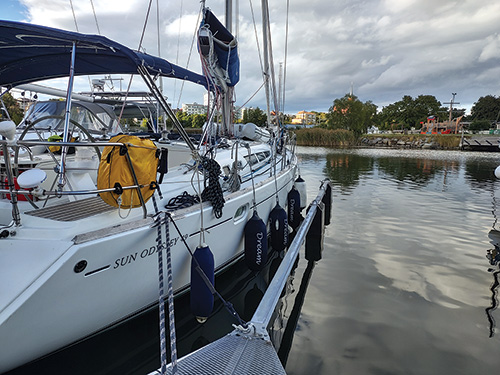

In the summer of 2022, I spent eight weeks cruising Norway, Denmark, and Sweden onboard a Jeanneau Sun Odyssey 49. This was another OceanCrewLink connection. Once again, it involved a late-night arrival to an unknown town in a country where I didn’t speak the language. Luckily, the owner met me at the airport and I didn’t have to pronounce “yacht club” in Norwegian. The first three weeks were spent with the owner and another young German crew exploring the Norwegian coast north up to Bergen. The owner was Swedish and we all spoke English, but it took some time to catch up with the differences in accents and boat terminology. My fellow German crewmate was a chef, which provided some invaluable culinary help on the trip; he soon had to return to work. As such, I spent some time with just the owner before his brother and another friend joined. Cruising doublehanded with the owner gave the trip a new, fun dynamic. Listening to the owner tell stories of his many adventures including a circumnavigation and his rescue during the infamous 1979 Fastnet Race was just one of the perks. Sailing through the fjords, inland waterways, and rock strewn archipelagos is truly awe inspiring and even with the rain and fog in July, I will be returning. And as with the first online-aided crewing experience, this exposed me to new waters, new cruising knowledge, more miles, and another stepping stone toward my own sailing dreams.
Through Facebook, I made a connection and spent three fun weeks in Mexico crossing the Sea of Cortez. This sailing gig was to help a couple with a very small part of their dream to sail around to the Caribbean. They had departed from Seattle on a Bénéteau First 45F5 and were often looking for an extra set of hands for longer passages. An interesting, and very modern, catch was that the skipper was still working remotely, so our itinerary had to be based around traveling only between Friday and Sunday. It goes without saying this trip was a very welcome change from the Pacific Northwest in February.
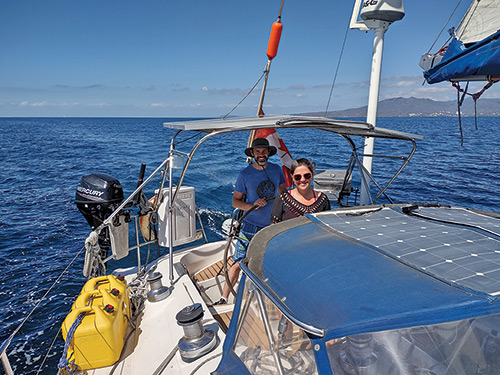
At this point, you might be asking yourself: “Am I just jumping on any neat sounding opportunity?” Well, yes, but not without some investigation ahead of time. Once connected with a skipper, I usually fire back and forth a few emails to clarify the basic plan, including dates, costs, and destinations, before proceeding to a video chat. This gives me time to feel out the owner. I usually have decided whether or not I’d be comfortable joining a boat before I even get to the video stage. I recommend asking about the skipper’s expectations for the new crew, how it has gone with other crew aboard, and where they felt there had been challenges. One skipper did a group video chat with me and the other crew, which I thought was a great idea. Once I feel that we could be a good fit, I also ask to contact any past crew for second opinions and try to provide any similar references for the owner. I ask past crew about the level of maintenance of the boat and the captain’s style of leadership.
Not all offers have seemed like the right fit and I’ve backed out for a few reasons. A number of people wanted crew on too short notice; and in a few cases, I just haven’t felt comfortable with the owner or my impressions of their plan. It’s important to have some prepared questions so the interview doesn’t just turn into a monologue from the skipper about their plan and then asking at the end, “So, are you in?”
Questions related to emergency equipment, who else will be on board, and why they are looking for extra crew are important. Ask very specifically about costs and sleeping arrangements. I’ve lucked out in always having my own cabin (apart from choosing the main cabin floor over the V-berth in particularly lumpy weather off Portugal).
On all of my trips, and even just day sailing with new crews, there has been some inevitably awkward dynamics when instructions aren’t clear, or when trying to adapt to new styles of working the boat. So even once you’ve joined a crew, asking specific questions is a great idea, such as, “As skipper, how do you like the lines run when coming into a dock?” A question like this shows that you know dockline arrangements are needed, but you’re also acknowledging that each skipper will have their own preferences.
I’ve also contacted a number of skippers through Facebook postings. Groups such as “Find Crew Be Crew” and “Sailboat Crewfinder Worldwide” are just two examples. As with all free social media connections, these can be a bit more hit or miss. I’m sure these posts receive a great number of responses and it would be more difficult to filter appropriate candidates.
This is a good place to bring up some concerns. Many stories exist about crew being harassed or taken advantage of in various ways due to differences in gender, age, and experience. Specific Facebook pages exist for female sailors listing captains to be avoided as, sadly, it’s all too common for “looking for crew” turning into “looking for companionship” without the skipper being upfront. From speaking with other crews, conflicts most often occur due to unclear or changing expectations.
There is much discussion about whether casual crew should be paid or, as it now seems more common, how much they should pay to join a voyage. Clearly, crew and skippers are often hired for deliveries, but this would be in a professional capacity. Forking over cash comes down to personal preference around the value you place on a particular voyage. It’s not surprising, we pay for special experiences all the time, from eating out to zip-lining on vacation. Personally, I’ve always looked for opportunities where the expenses are shared. On all three of my sailing with strangers trips, food expenses were shared and boat costs were covered by the owner. I’ve found this to be a good balance. The crew can bond over shopping and sharing recipes, and I don’t feel as though the owner is hosting crew purely to pay for the boat expenses. I’m happy to offer my skilled labor in exchange for a unique sailing trip. With my level of experience, I have encountered captains who thought I was looking to be a paid hand. This could create an environment where the captain might feel the need to defend their leadership, and I don’t want to be at their beck and call.
Along these lines, “shared experiences” opportunities are increasingly common. These vessels charge crew to join for a particular experience, varying from day sails to multi-day excursions. Since these are advertised specifically not as charter companies, I might be concerned with legalities should an incident occur, and I’ve found it difficult for numerous skippers to quantify their prices. The rules and regulations may vary from one country to another, and I’d encourage crew exploring these opportunities to approach with caution and be rigorous in their evaluation process.
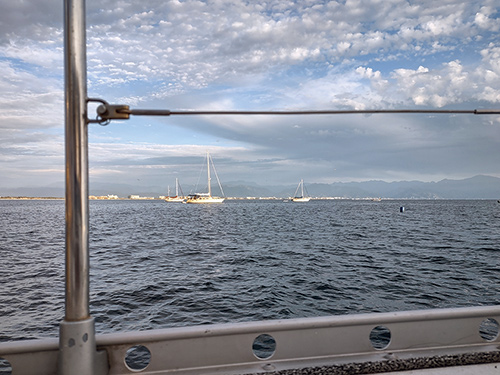
As always, meeting random strangers on the internet carries risk. Jumping on a sailboat in another part of the world with a random stranger is another thing altogether. Ask lots of questions, be specific, trust your gut, and do enough talking and research so that your new crewmates aren’t complete strangers when you arrive. Lots of people want extra help aboard, so give it a shot. There are some amazing opportunities on the waters of the world, and more avenues than ever to connect with other sailors.
Paul Mais is a west coast Canadian presently exploring the Caribbean aboard his Beneteau First 405, SV Jamar. All photos courtesy of the author.

